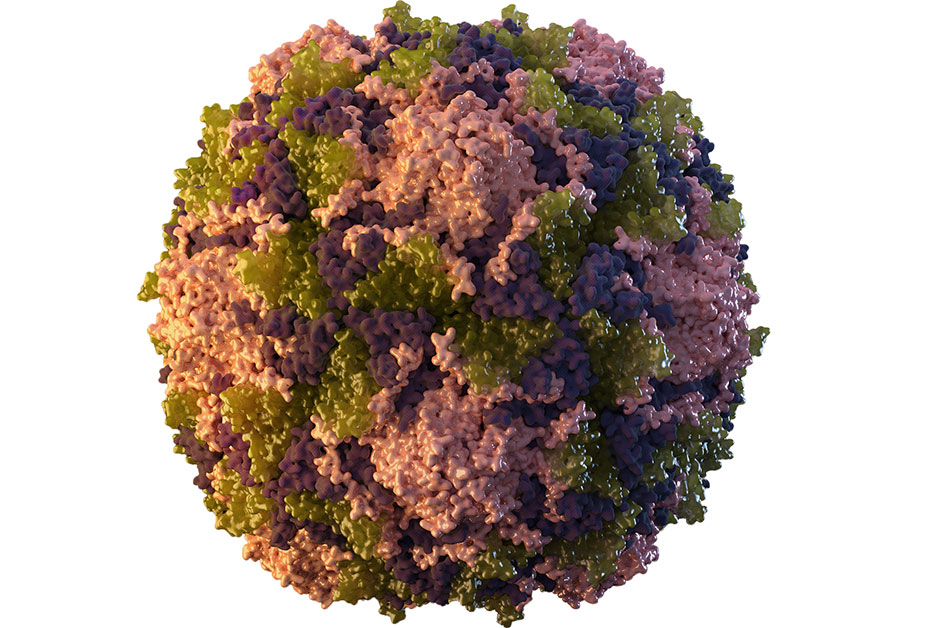Polio

Polio is a crippling and potentially fatal infectious disease. It is caused by poliovirus. The virus spreads from person to person and can invade an infected person’s brain and spinal cord, causing paralysis (can’t move parts of the body). Most people who get infected with poliovirus will not have any visible symptoms or will have flu-like symptoms. A smaller proportion of people with poliovirus infection will develop other more serious symptoms that affect the brain and spinal cord and could lead to paralysis. There is no cure, but there are safe and effective vaccines.
Quiz
Key Facts
- Polio was eliminated (meaning the absence of continuous disease transmission for greater than 12 months) in the United States in 1979. We continue to vaccinate our nation’s children knowing that the disease still circulates in other parts of the world and could easily be brought into the U.S.
- Most people infected with poliovirus have no apparent symptoms. About 24% of people infected with poliovirus have minor flu-like symptoms that don’t last long. They may have a sore throat, fever, tiredness, nausea, headache, or stomach pain. A small proportion of people with poliovirus will develop meningitis (infection of the covering of the spinal cord and/or brain) or paralysis in the arms and/or legs.
- While borders can’t stop diseases from spreading, vaccines can. Fortunately, we have a good wall of protection against polio in the United States. Most of us have been vaccinated, and current polio vaccination coverage among young children in the United States is 93%.
- Children should be vaccinated with 4 doses of inactivated polio vaccine (IPV) at the following ages: one dose at 2 months, 4 months, and 6 to 18 months of age, and a booster dose at 4 to 6 years of age.
Media
Prevention Tips
- Polio vaccine provides the best protection against polio, or poliomyelitis, a crippling and potentially deadly disease.
- Children in the United States should get inactivated polio vaccine (IPV) to protect against polio. They should get four doses total, with one dose at each of the following ages:
- 2 months old
- 4 months old
- 6 through 18 months old
- 4 through 6 years old
- Children who will be traveling to a country where the risk of getting polio is greater should complete the series before leaving for their trip. If a child cannot complete the routine series before leaving, an accelerated schedule is recommended as follows:
- 1 dose at age 6 weeks or older
- a second dose 4 or more weeks after the first dose
- a third dose 4 or more weeks after the second dose
- a fourth dose 6 or more months after the third dose
- Most adults do not need polio vaccine because they were already vaccinated as children. But three groups of adults are at higher risk and should consider polio vaccination in the following situations:
- You are traveling to a country where the risk of getting polio is greater. Ask your healthcare provider for specific information on whether you need to be vaccinated.
- You are working in a laboratory and handling specimens that might contain polioviruses.
- You are a healthcare worker treating patients who could have polio or have close contact with a person who could be infected with poliovirus.
- Adults in these three groups who have never been vaccinated against polio should get 3 doses of IPV:
- The first dose at any time,
- The second dose 1 to 2 months later,
- The third dose 6 to 12 months after the second.
Page last reviewed: October 29, 2015
Content
source: Centers for Disease Control and Prevention


